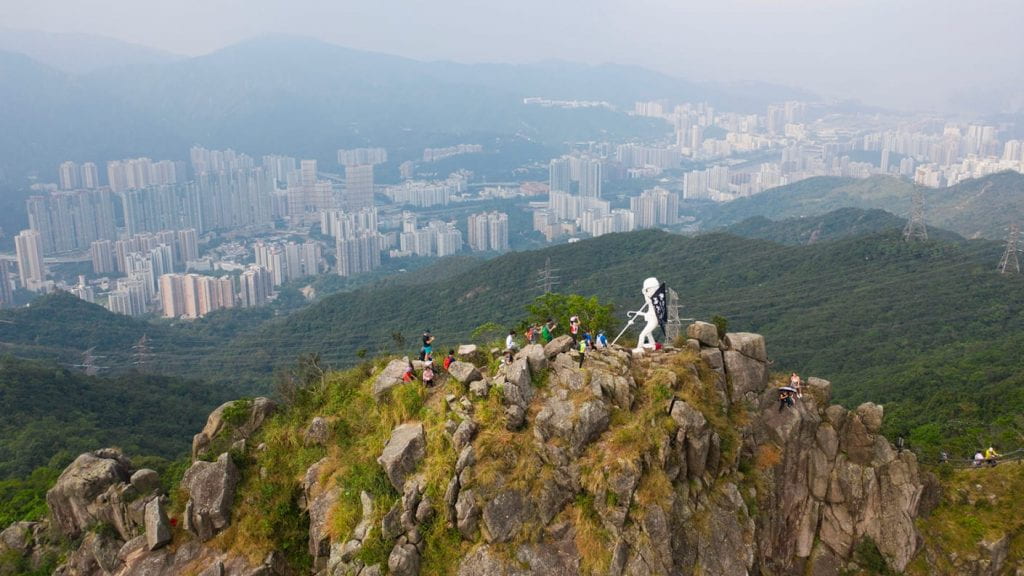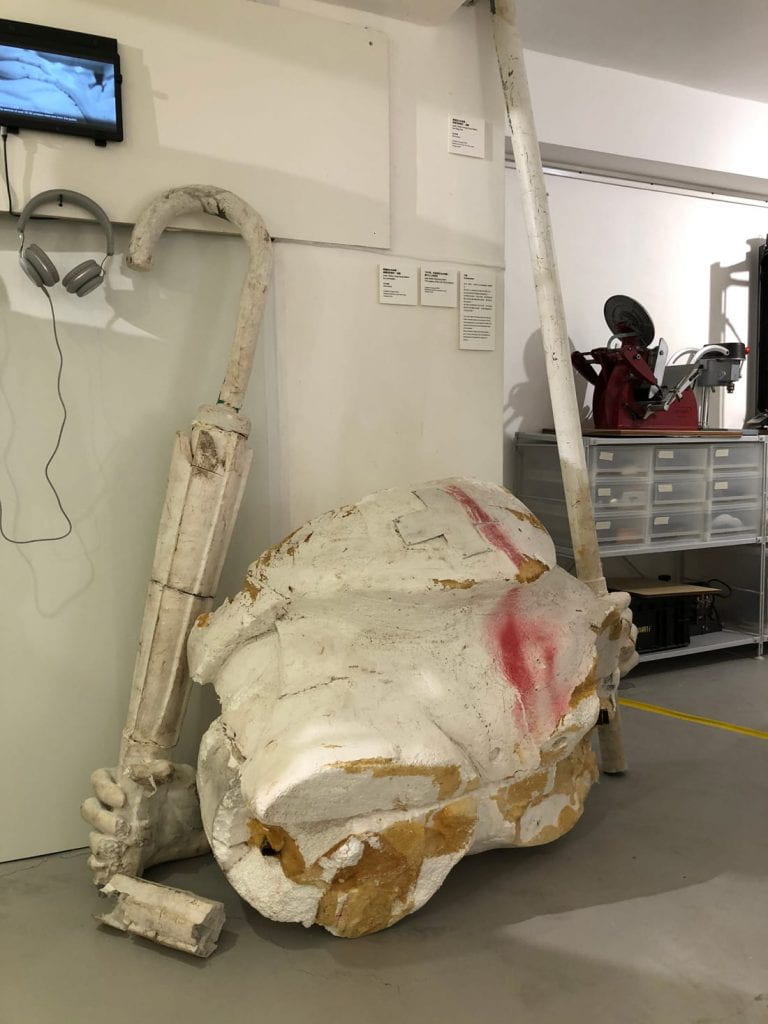The spirit of the year 2020 could be defined as resilience, but also that of critical local and international crises. To many, it felt like catastrophic events were happening one after another in an unusually condensed manner, and the feeling of bad things happening in the world – a global SNAFU – was prominent. Even as the world is well within 2021, it would not be a stretch to feel like 2020 has failed to end yet. Although the most obvious answer would be that it is because the COVID-19 pandemic is still ongoing, a more precise answer would be: critical crises are newly and continuously happening.
For Hong Kong, there have been a series of political crises since 2014, as Hongkongers’ sovereignty and freedom have been steadily undermined. The first surge of protest in Hong Kong, dubbed the Umbrella Movement, had started in 2014 as a response to China’s decision to allow only the Chinese government pre-approved candidates in Hong Kong’s 2017 elections. The people of Hong Kong demanded free elections,1 and have fought for their sovereignty and the “One Country Two Systems.” This system started in 1997 when Hong Kong was handed over to China by the United Kingdom. It refers to the unique situation of Hong Kong being a Special Administrative Region belonging to China, but having a separate legal system, its own currency, passport, and immigration channels, and limited self government.2 The Umbrella Movement was unsuccessful in making the government make concessions, and since then the Communist Party of China has been increasing its influence over Hong Kong, decreasing its previous level of independence.3
A new surge of protests emerged in 2019 in response to the Extradition Bill, first proposed in February 2019, which would have allowed extraditions from Hong Kong to countries including mainland China. This amendment to Hong Kong’s extradition law would have allowed criminal suspects in Hong Kong to be sent to mainland China for trial. Hong Kong’s leader Carrie Lam has since announced the withdrawal of the bill officially on September 4th, 2019,4 but the protests have continued.
The residents of Hong Kong feared the extradition amendments because it would have let the accused be sent to countries where Hong Kong has no extradition treaty. Hongkongers feared that Beijing would target Hong Kong dissidents by charging them with unfair charges and bringing them to be judged in Communist Party controlled Chinese courts.5
In 2019, the protest was mostly peaceful, although there had been some violence from some of the protesters. The police have been using violent force to crack down on the protests, with a measure of aggression that is beyond necessary. On June 12th, the police first started using pepper spray, batons, and tear gas to deter and disband protesters. Beyond demanding the cancellation of the bill, the protesters have also demanded an increase in democracy and an investigation into the police, and amnesty for arrested participants and direct elections for lawmakers and the chief executive. These demands are a consensus of the people, decided quite democratically through voting in online forums since the movement doesn’t have distinct central leaders.6
Since then, a controversial new national security law worse than the Extradition Bill was proposed in China in May of 2020 and rapidly passed in June 2020. This law was a major hit to Hong Kong’s autonomy and civil liberties,7 functioning to eliminate the widespread opposition to the Communist Party, allowing Beijing to stifle dissent by clamping down on various political crimes.8 The law criminalizes secession, subversion of state power, terrorism, and collusion with foreign entities, with a penalty that includes a life sentence. Under this new law, China will establish a “National Security Committee” independent from Hong Kong laws that will overlook the investigation and prosecution of violations. The law extends to actions outside of Chinese territory, including offenses from external regions by non-Hong Kong residents, and in what is deemed as severe cases of security threat, China can assert total legal jurisdiction and can send suspects to the mainland for trial. This is further complicated by the vague language used in this law, as the severity of offenses can be defined as to how China sees fit. Since the law passed, arrests have been made, and the residents of Hong Kong have to be critically aware of the speech and actions not to be seen as violating the new law.9
Art that Emerged from Protests
Throughout the Hong Kong protests, artists have been taking to online and offline modes of art-making and distribution to support, represent, and raise awareness of the Hong Kong protests and the protesters’ demands. Art functioned as a call to action and a response to the current climate, being both reactions and recordings of current events. In this article, the focus is on installations or physical public artworks in Hong Kong, including the ones in Hong Kong gallery settings, for those are the works made primarily by and for the people of Hong Kong. This archival collection is a record of 2019-2020 public art in Hong Kong but works in galleries that speak particularly to the experiences and the people of Hong Kong will also be addressed. All of the various artworks that are being created or have been created are forms of protest against the government, but the distinction is that online art often aims for international dissemination and awareness-raising, and this purpose is not always as critical for the physical works in Hong Kong public spaces.
Art Before and After June 2020
Before June 2020, it was less difficult for Hong Kong artists and citizens to appreciate and disseminate politically charged art. The decreased level of freedom of expression post-June 2020 brought unwelcome changes to that. The new security law has a negative impact on the artists as the degree of restricted freedom of expression and increased self-censorship is a concern for many.10 However, some still continue to make art that could now be “illegal.” And others have been finding creative ways to evade censorship.
Artist Kacey Wong performed his live art performance Shop Like There’s No Tomorrow 血拼 on July 1st, 2020. He dressed up to look like a rich shopper from China and walked around shopping centers with brand name shopping bags that on one side showed the Chinese words taken from the National Security Law such as separatism, subversion, collusion, and terrorism. He bought bitter gourd during this performance to symbolize what life tastes like in Hong Kong.11 Wong has been active with his protest arts from the very beginning, and in the face of new restrictions, he made a public statement about the new law in a way that seems to be abstract enough not to be illegal. It is easy to read between the lines and understand his political motivations and message, but he is not specifically fighting for or against things – after all, he is only carrying around shopping bags with words on it.
As for some Hong Kong artists, they have been producing work for galleries that refer to current and recent events using coded visual language. In Man Mei To’s photographic series titled Who is Murderer – I-V, made in 2020, pale body parts are both emerging from and sinking into the water. Gallery Exit states that the images are inspired by a Hitchcock film called Frenzy, but Man told Artnet News that “viewers can contextualize the work referring to their own experiences.”12 Those who have been following what has been happening in Hong Kong would be able to make a connection between the death of the student protester Chan Yin-lam, whose naked body was found in the sea in September 2019. Giraffe Leung’s Paper Over the Cracks is a series of street artworks where he highlights and documents the sites where protest graffiti once existed.13 The street art, protest slogan graffiti, and posters on the walls and pavement were erased by the government workers, leading to a marked cityscape where the erasure is evident. Leung created squares with yellow tape to frame the areas that government workers had painted over and added labels next to them. Leung asked for people to join him, which led to anonymously created yellow frames across the city, including where protesters and police had clashed.14
Hong Kong’s Democracy and Independence Continues to be Undermined
On March 11th, 2021, China’s legislature passed the resolution “patriots governing Hong Kong” to increase control over Hong Kong’s electoral system, now installing a pro-Beijing panel to vet and elect candidates, reducing democratic representation.15 It is too early to determine how this will affect Hong Kong’s local public arts – both in the streets and in art spaces – in relation to the subject of protest, but as China increases its influence at an unprecedented level, it is clear that the difficult political climate will continue, making creative freedom a hardship.
Photo Gallery
Blurbs for images can go bellow here. Repeat this for following figures. Make sure that they are in the caption for the Image Gallery. Separate the image gallery with a spacer block and separator line.
Additional Resources (optional)
Link to website/resources can go here.
Link to website/resources can go here.
Sources
[1] Example source can go here. Keep in Chicago-Style format.


